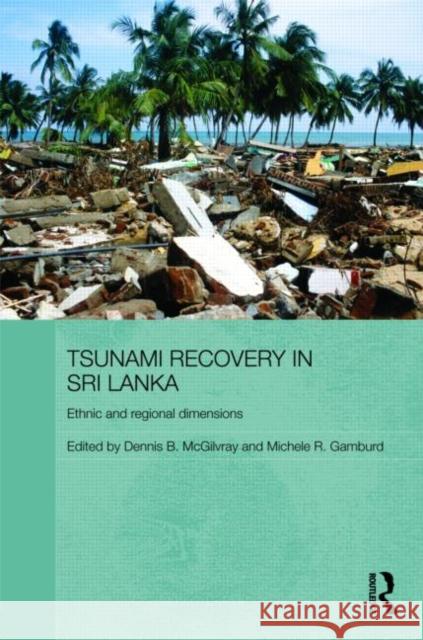Tsunami Recovery in Sri Lanka: Ethnic and Regional Dimensions » książka
Tsunami Recovery in Sri Lanka: Ethnic and Regional Dimensions
ISBN-13: 9780415778770 / Angielski / Twarda / 2010 / 208 str.
Tsunami Recovery in Sri Lanka: Ethnic and Regional Dimensions
ISBN-13: 9780415778770 / Angielski / Twarda / 2010 / 208 str.
(netto: 691,13 VAT: 5%)
Najniższa cena z 30 dni: 705,23
ok. 22 dni roboczych
Dostawa w 2026 r.
Darmowa dostawa!
The Indian Ocean Tsunami, which devastated 70 percent of Sri Lanka's coastline and killed an estimated 35,000 people, was remarkable both for the magnitude of the disaster and for the unprecedented scale of the relief and recovery operations mounted by national and international agencies. The reconstruction process was soon hampered by political patronage, by the competing efforts of hundreds of foreign humanitarian organizations, and by the ongoing civil war. The book is framed within this larger political and social context, offering descriptions and comparisons between two regions (southwest vs. eastern coast) and four ethnic communities (Sinhalese, Tamils, Muslims, and Burghers) to illustrate how disaster relief unfolded in a culturally pluralistic political landscape. Approaching the issue from four disciplinary perspectives - anthropology, demography, political science, and disaster studies - chapters by experts in the field analyse regional and ethnic patterns of post-tsunami reconstruction according to different sectors of Sri Lankan society. Demonstrating the key importance of comprehending the local cultural contexts of disaster recovery processes, the book is a timely and useful contribution to the existing literature.
The Indian Ocean Tsunami, which devastated 70% of Sri Lanka’s coastline and killed an estimated 31,000 people was remarkable both in the magnitude of the disaster and in the scale of the relief and recovery operations mounted by national and international agencies. The disastrous ocean wave caused by an undersea subduction earthquake off the western coast of Sumatra struck the coast lines of at least eight nations, including Sri Lanka. This book explores the aftermath of the tsunami in Sri Lanka, where coastal communities that are significantly different in terms of social structure, economy, language, religion, kinship, and cultural identity were affected. In addition, a separatist guerrilla movement has been fighting the central government of Sri Lanka for decades, so Sri Lanka’s tsunami relief and recovery operations took place in a situation of regional ethnic conflict.
The book is framed within this larger political and social context and it explores to what extent “culture matters” in grassroots responses to a natural disaster. From a multidisciplinary perspective, chapters by experts in the field analyse regional and ethnic patterns of post-tsunami reconstruction according to different sectors of Sri Lankan society. The book is a timely and useful contribution to the literature by demonstrating the key importance of comprehending the local cultural contexts of disaster recovery processes.











